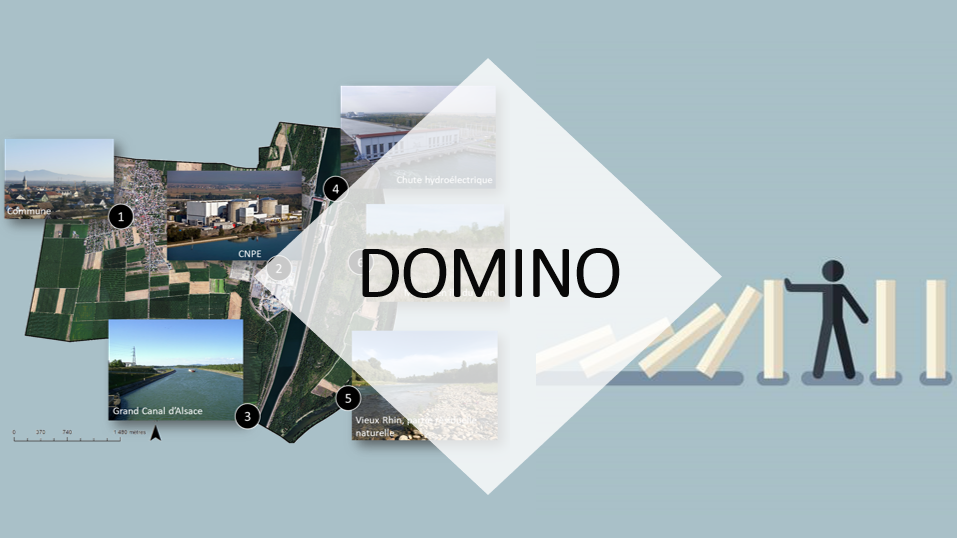Faits structurants, points de bascule et leurs influences sur un grand fleuve, le Rhin : approches historiques et prospectives (DOMINO)
Structuring facts, tipping points and their influences on the Rhine River: historical and prospective approaches (DOMINO)
2022
OHM Project
Fessenheim OHM

Leader : Staentzel Cybill
Project leader’s laboratory : Laboratoire Image Ville Environnement (LIVE)
Full address of laboratory : 3, rue de l'Argonne, 67000 Strasbourg, France
Keywords :
Connexions
Déconnexions
Écologie historique
Paléo-chenaux
Points de bascule
Pollutions
Reconnexions
Sédiments alluviaux
Trajectoires
Disciplines :
Biogeochimie
Ecologie
Geographie
Geohistoire
Geomatique
Geomorphologie
Limnologie
Phytosociologie
Sedimentologie
Abstract :
La localisation de l’OHM Fessenheim, aux frontières de l’Allemagne et de la Suisse, dans une région fortement industrialisée en bordure du Rhin, en fait un objet d’étude unique. Au-delà des questionnements liés à la centrale elle-même, il est important de souligner la proximité et l’interdépendance de ce territoire avec le Rhin Supérieur et ses activités. Cette partie transfrontalière du fleuve vit des successions de déconnexions, connexions et reconnexions qui jalonnent et expliquent ses trajectoires spatio-temporelles d’état, d’usages et de services. Dans ce cadre, le projet DOMINO vise à caractériser le(s) point(s) de bascule pouvant modifier les trajectoires spatio-temporelles du socio-hydrosystème Rhin Supérieur au droit de Fessenheim et à identifier les conséquences des changements induits. Un second objectif vise à investiguer la question de l’opposition du visible/invisible au sein de ces trajectoires via l’étude de l’accumulation et de la remobilisation de micro-polluants tels que des contaminants organiques et inorganiques provenant de zones industrialisées en bordure du Rhin et séquestrés au sein des sédiments alluviaux. Nos actions de recherche visent ainsi globalement à « rendre visible » les processus écologiques, géochimiques et géomorphologiques qui ont été déterminants dans l’état actuel du fleuve. Nous souhaitons comprendre comment les usages et activités anthropiques influent sur la perte de fonctionnalité de nos socio-hydrosystèmes, y affectant non seulement la qualité des usages eux-mêmes mais également des services écosystémiques rendus par la biodiversité.
Translated abstract :
The location of the OHM Fessenheim, on the borders of Germany and Switzerland, in a highly industrialized region on the Rhine, makes it a unique object of study. In addition to the issues related to the power plant itself, it is important to emphasize the proximity and interdependence of this area with the Upper Rhine and its activities. This cross-border part of the river experiences a succession of disconnections, connections and reconnections which mark out and explain its spatio-temporal trajectories of state, uses and services. In this context, the DOMINO project aims to characterize the tipping point(s) that can modify the spatio-temporal trajectories of the Upper Rhine socio-hydrosystem in the vicinity of Fessenheim and to identify the consequences of the changes induced. A second objective is to investigate the question of the visible/invisible opposition via the study of the accumulation and remobilization of micro-pollutants such as organic and inorganic contaminants originating from industrialized areas on the banks of the Rhine and sequestered within the alluvial sediments. The overall aim of our research is to make visible the ecological, geochemical, and geomorphological processes that have determined the current state of the river. We wish to understand how human uses and activities influence the loss of functionality of our socio-hydrosystems, affecting not only the quality of the uses themselves but also the ecosystem services provided by biodiversity.

